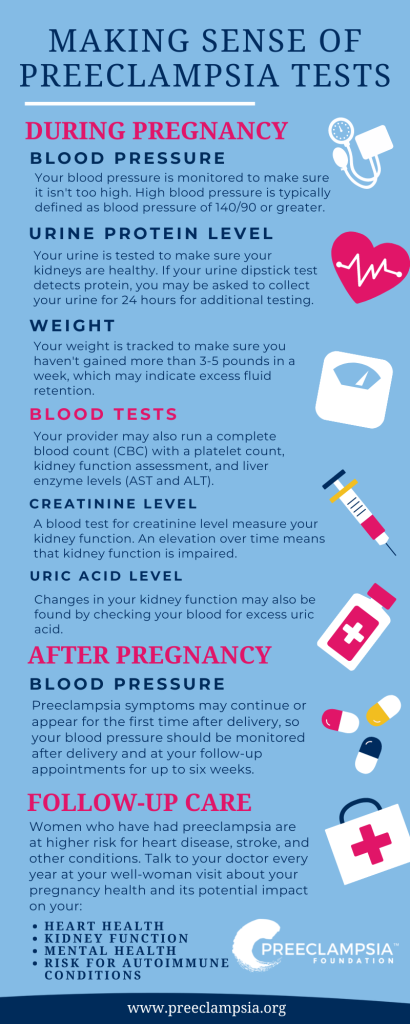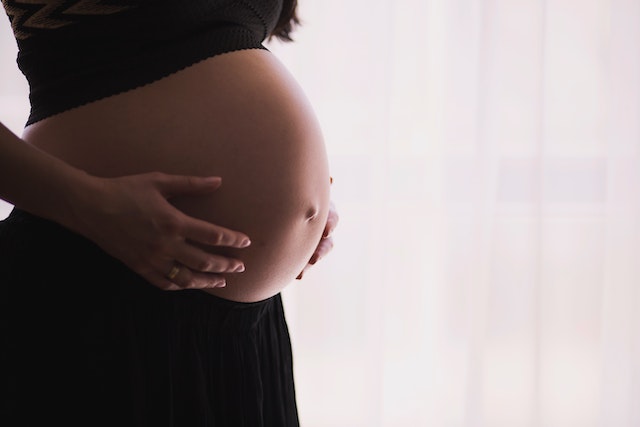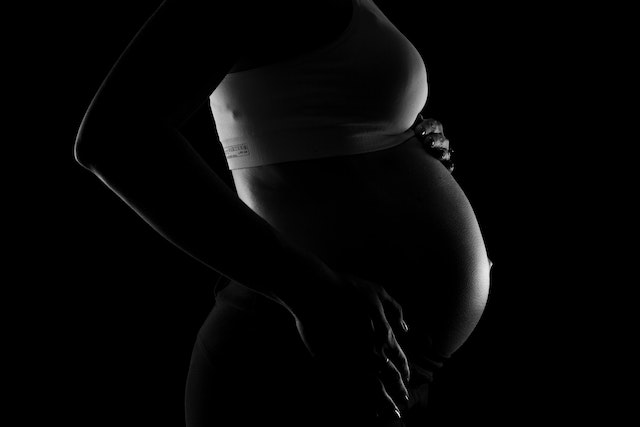What is Preeclampsia?
Preeclampsia, previously known as toxemia, is a condition that occurs during pregnancy. Preeclampsia is characterized by high blood pressure in pregnant women who have had no history of high blood pressure. In addition to this, pregnant women who have preeclampsia will also have a high concentration of proteins in their urine.
It is important to note that while preeclampsia often affects women late in pregnancy, it can happen as early as in the 20th week of pregnancy. If it is left untreated, it may lead to a potentially fatal condition known as eclampsia.
What causes preeclampsia?
The specific cause of preeclampsia remains unknown to-date. According to the Preeclampsia Foundation, preeclampsia is linked to changes in the biological function of the placenta. This is thought to happen when the placenta does not form well in the uterine wall. These changes are known to cause the narrowing of the blood vessels which in turn, increases blood pressure.
Research also indicates that additional factors that may contribute to the condition including:
- inadequate blood flow to the uterus
- genetic predisposition
- disruption of the immune system
What are the risk factors of preeclampsia?
As mentioned above, preeclampsia is a pregnancy-related condition. Preeclampsia affects between 5% and 8% of pregnant women. Pregnant teens, older women above 40 years and first time pregnant women are at a higher risk of the condition. Some of the risk factors associated with preeclampsia include:
- Previous medical history of high blood pressure before pregnancy
- Teen pregnancy or pregnancy in women above 40
- Preeclampsia in previous pregnancies
- A history of kidney disease and/or diabetes
- Having a close female relative who has had preeclampsia
- Obesity
- Multiple parity pregnancy (that is, a pregnant woman carrying more than one baby – twins, triplets etc)
What are the symptoms of preeclampsia?
Preeclampsia is a serious condition, and it is important that pregnant women are aware of the symptoms to look out for. Additionally, some of the symptoms of preeclampsia mimic ‘normal’ changes during pregnancy. According to the Preeclampsia Foundation, this is the reason some pregnant women do not feel sick until the diagnosis is made at hospital.

There are three important symptoms of Preeclampsia including high blood pressure, protein in urine and swelling.
High Blood Pressure
High blood pressure in a pregnant woman who has not had high blood pressure before is one of the main symptoms of preeclampsia. This is dangerous during pregnancy as it hampers the proper functioning of the placenta which is to transport nutrients and oxygen to the unborn baby. If high blood pressure is not managed, it affects kidney function which increases the severity of the condition.
Knowing one’s blood pressure before pregnancy is important. Pregnant women will also get their blood pressure taken and recorded regularly during antenatal clinics. This allows the health care provider to note any changes in the blood pressure readings.
Protein in urine
Protein in urine, medically known as proteinuria, is another sign of preeclampsia. A pregnant woman develops proteinuria when proteins are not properly filtered by the kidney. This happens because preeclampsia interferes with normal kidney function.
Proteinuria is screened using a simple dipstick test of the urine during antenatal clinics. It is important to note that a pregnant woman may develop proteinuria as a symptom of preeclampsia, even though their blood pressure reading is within normal range.
Swelling (also known as edema)
Swelling, to a certain extent, is relatively normal during pregnancy. For pregnant women with preeclampsia however, the swelling results from the accumulation of excess fluid in different parts of the body. This is easily noticeable on the face, the hands and the eyes. In cases of extreme swelling, preeclampsia may be accompanied by discoloration of the legs.
Additional symptoms of preeclampsia include:
- A dull or throbbing headache that does not go away even with over-the-counter medication
- Nausea or vomiting that persists after the first trimester
- Abdominal pain that may be accompanied by pain in the shoulders
- Lower back pain especially when in combination with other preeclampsia symptoms
- Vision changes that include blurriness and sensation when exposed to flashing light
- A racing pulse, coupled with shortness of breath and an unsettled feeling that something bad is about to happen have also been linked to preelampsia.
What is eclampsia?
Eclampsia is a severe medical condition that results from preeclampsia. It is a rare complication that affects 1 in every 200 pregnant women with preeclampsia. Eclampsia is characterized by seizures during pregnancy. Seizures occur when the brain experiences abrupt and abnormal electrical activity.
What are the symptoms of eclmapsia?
Since eclampsia is a complication of preeclampsia, pregnant women with eclampsia may have symptoms of both conditions. Common symptoms of eclampsia include seizures, agitation and unconsciousness.
Seizures
Seizures occur when high blood pressure damages the walls of the blood vessels. This restricts the flow of blood, and easily causes swelling in the brain. When this interferes with brain function, it leads to seizures.
Agitation
Agitation refers to feelings of restlessness or annoyance. It is normal to feel agitated from time to time, but when this is prolonged, it may point to an underlying condition such as eclampsia
Unconsciousness
Pregnant women who lose consciousness must get medical help immediately as this may occur because of changes in the blood pressure, low blood sugar levels or emotional trauma. All of these factors have been linked to preeclampsia.
Diagnosis and Treatment of preeclampsia and eclampsia
Some of the symptoms of preeclampsia and eclampsia are ‘silent’, meaning they are not always noticeable. This is why it is important for pregnant women to attend antenatal clinics regularly. During these appointments, health care professionals will take blood pressure readings and urine tests, providing the best chance to diagnose and manage preeclampsia and eclampsia.
Depending on the severity of the condition, the doctor may recommend bed rest, medication to manage blood pressure and blood/urine tests. For severe eclampsia, the doctor may need to deliver the baby immediately to save both the baby and mother.
Bibliography
Dulay, A. T. (2018, 3). Preeclampsia and Eclampsia. Retrieved 3 7, 2019, from Merck Manual: https://www.merckmanuals.com/home/women-s-health-issues/complications-of-pregnancy/preeclampsia-and-eclampsia
Preeclampsia Foundation. (2019, January 03). About Preeclampsia. Retrieved March 7, 2019, from Preeclampsia Foundation: https://www.preeclampsia.org/health-information/about-preeclampsia
Redman, C. W., & Sargent, I. L. (2005). Latest Advances in Understanding Preeclampsia. Science, 1592-1593.
World Health Organization, Department of Reproductive Health and Research. (2005). Detecting pre-eclampsia : a practical guide, using and maintaining blood pressure equipment. WHO.




Why should I have my blood pressure checked at the Antenatal Clinic? – Tunza Mama
[…] Read More: Preeclampsia – what is it? […]